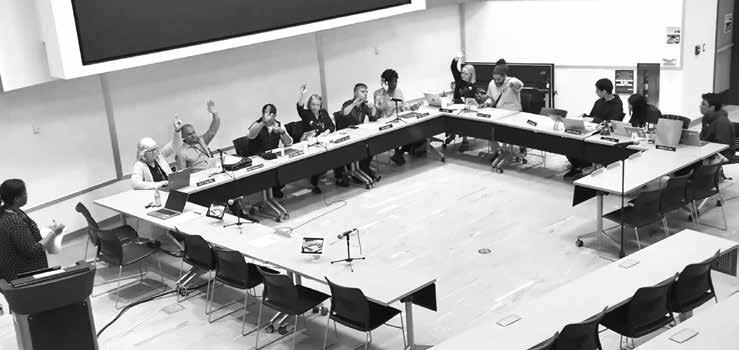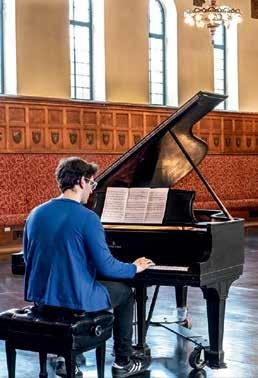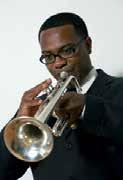












By Matt Dougherty
Workers at the GreenStar Food Co-Op on Cascadilla Street voted decisively to unionize on August 28, marking a significant milestone for the popular locally-sourced grocery store in Ithaca.
The vote was conducted by the National Labor Relations Board (NLRB) and saw 60 workers in favor and 14 against forming a union under Workers United, which also represents Gimme Coffee, Sciencenter, Citizen Action, and Ithaca Health Alliance workers.
Workers United also briefly represented the workers at all three Starbucks locations in Ithaca that voted to unionize in April 2022. Starbucks responded by shutting down all three unionized storefronts in the city, which resulted in an NLRB Judge ruling that the company repeatedly violated federal labor laws.
The unionization effort makes GreenStar the second cooperative grocery store in upstate New York to organize, following Buffalo’s Lexington Co-op, which unionized in late 2022 under the same union. Workers at GreenStar have cited the desire for greater workplace democracy, improved communication, and increased accountability as key reasons for forming the union.
“Now that the election is decided, we

look forward to negotiating with management and building a path forward with them in ensuring the co-op continues to be an employer of choice, and the best place to work and shop in the city,” GreenStar workers said in a collective statement following the vote.
The successful vote initiates the next phase in the unionization process, which will involve negotiations with GreenStar management.
GreenStar’s General Manager, Jeff Bessmer, responded to the vote with a supportive tone, acknowledging the democratic nature of the process.
UAW members at Cornell University voted to approve a new contract with the university, officially ending the strike that disrupted campus operations at the start of the fall semester. The vote, conducted on Sept. 1 and 2, saw 77% of union members favoring ratification of the agreement reached on Aug. 28 after weeks of negotiations.
“The tentative agreement has been ratified, and the strike is officially over,” said Lonnie Everett, UAW International Servicing Representative for Region 9. “Your unwavering solidarity and unity have led us to this historic moment.”
The four-year, $43 million contract includes 21% to 25.4% raises with cost-of-living adjustments. It also eliminates the tiered wage system, ensuring many workers at Cornell will see their hourly pay exceed $24 by the second year. However, some lower grades, such as S02 and S03, will not reach this threshold until the later years of the contract, with employees in grade S02 only surpassing $24 per
“GreenStar staff at our Cascadilla St. store [have] voted in an NLRB election 6014 to be represented by the union Workers United RRJB,” Bessmer said. “Since the Co-op was notified of this interest among staff, we have been supportive of this important democratic voting process.” He added, “We congratulate the organizing team for their work and look forward to productive negotiations and to GreenStar continuing to be a great place to work.”
The unionization effort at GreenStar is not limited to the Cascadilla Street
Continued on Page 5
at
hour by the third year, depending on their years of service. Despite the pay increases, the contract does not include all union demands, such as free parking. UAW member Stephanie Heslop expressed disappointment, noting that many workers in lower grades will still earn less than a living wage by the end of the contract.
The strike, which began on Aug. 18, officially ended on Sept. 2. Cornell administration urged students to continue utilizing alternative dining options as services resume and workers return to their shifts. Food trucks will be available on campus Sept. 3-4.
Cornell History Professor Corey Ryan Earle suggested the 15-day strike could be the longest in the university’s history. The strike caused significant disruptions, including in maintenance, dining services, and custodial work. Cornell’s efforts to replace striking workers with non-union employees during the strike drew backlash from union supporters.
A story in our Student Survival Guide had incorrectly implied that swimming was permitted at one of the locations listed. Swimming is not permitted at Six Mile Creek and the Ithaca Times apologies for this oversight in the editing process.
F r EE lan CE rs : Barbara Adams, G. M Burns, Jane Dieckmann, Charley Githler, Ross Haarstad, Steve Lawrence, Marjorie Olds, Henry Stark, and Arthur Whitman
THE ENTIRE CONTENTS OF THE ITHACA TIMES ARE COPYRIGHT © 2024, BY NEWSKI INC.
All rights reserved. Events are listed free of charge in TimesTable. All copy must be received by Friday at noon. The Ithaca Times is available free of charge from various locations around Ithaca. Additional copies may be purchased from the Ithaca Times offices for $1. SUBSCRIPTIONS: $89 one year. Include check or money order and mail to the Ithaca Times, PO Box 27, Ithaca, NY 14851. ADVERTISING: Deadlines are Monday 5 p.m. for display, Tuesday at noon for classified. Advertisers should check their ad on publication. The Ithaca Times will not be liable for failure to publish an ad, for typographical error, or errors in publication except to the extent of the cost of the space in which the actual error appeared in the first insertion. The publisher reserves the right to refuse advertising for any reason and to alter advertising copy or graphics deemed unacceptable for publication. The Ithaca Times is published weekly Wednesday mornings. Offices are located at 109 N. Cayuga Street, Ithaca, NY 14850 607-277-7000, FAX 607277-1012,
(1972–1978) and The
By Mark Syvertson





By Maddy Vogel
The Ithaca City School District is seeing some staffing changes and reductions to class offerings for the upcoming school year, the result of a voted-down budget in May and the subsequent implementation of a reduced budget which was approved by voters in June.
After several individuals came to an earlier August board of education meeting expressing disapproval for the district’s decision to eliminate all building substitutes for the upcoming school year, administration at the district gave a presentation at a special board meeting held on Tuesday, Aug. 20 that outlined the reductions ahead for the school year.
Officials at the district previously stated that they would undergo a hiring “chill” for the upcoming year by not filling most positions that were expected to be vacant due to retirements and resignations. The ability to only rely on a hiring chill has been challenged by the introduction of a 17 student class size minimum, which has affected class offerings for students at all levels.
At recent board meetings, teachers and other staff have shared that their positions were being cut due to the class size minimum being instituted, including teachers for two of the district’s five language programs and one college readiness program.

language cuts that came to light earlier this summer.
A part-time counselor was eliminated at LACS, and at least two part-time counselors at IHS.
“I think we have to start focusing on the future because ... we have to look at how we can make sure we don’t have more cuts next year.”
— Erin Croyle, Board member
By instituting the class size minimum, the district plans to reduce 17 of their elementary sections across the four elementary schools and one of their Pre-K sections. Additionally, there will be no extended day programming and some art and music integration time has been eliminated.
Staffing changes at the elementary level include eliminating three part-time special education positions and one part-time spanish teacher position at South Hill.
At the secondary level, some ELA positions were reduced, including 1.5 positions at Ithaca High School (IHS) and one position at Lehman Alternative Community School (LACS). One foreign language position will be eliminated at Boynton and DeWitt middle schools, and another parttime position at IHS, the result of previous
One full-time social worker at IHS was also cut. The AVID college readiness program was cut at IHS, but district officials said that some aspects of the AVID program have been moved into other programming at the school.
Further reductions include three teaching assistants at IHS, at least two science positions at IHS, at least two full-time math positions at IHS, one part-time math position at LACS and one full-time reading/AIS teacher at Boynton.
District officials said that these position eliminations are tied to enrollment data. According to data at the New York State Department of Education, enrollment in the ICSD has declined by 4.4% in the past 10 years.
school year. It is unclear whether the chief operations officer position will be filled or left vacant. It is currently filled by Amanda Verba, a top-paid executive employee, who will soon be leaving the district.
In some schools, the number of assistant principals have been reduced, along with one full-time educator for inclusion being cut at the secondary level. Additionally, one equity officer has been reduced, along with three full-time administrative assistants.
District-wide, schools will see less custodial support, limited program TA’s, limited technology purchases and a reduced number of cell-phone lines.
The board is planning to hold development sessions, both in public and in private, to assess the district’s priorities and goals moving forward. The early stages of budget development for the 2025-26 budget year will begin soon, and some board members are warning that the school needs to prepare for another budget that may not be approved unless it is under the state tax cap.
“Recovering from a $7 million budget shortfall has made this one of the toughest years in recent memory for the Ithaca City School District.”
— Kathryn Cernera, president of the Ithaca Teachers Association
In administration, the executive team has been reduced by 22% with former Deputy Superintendent Lily Talcott’s position left vacant for the upcoming
“I think, as a board, we need to [...] think about taxpayers and community members, ourselves included, not wanting to vote anything but a tax cap budget again.” Board Member Erin Croyle said. “Where does that put us at for the next school year, considering all of the things we
RE: Marc Molinaro vs Josh Riley
“When Roe fell in June 2022, I took solace in the fact that I live in a “safe” state, one that had codified Roe into law in 2019 via the Reproductive Health Act. I was confident that New York State would remain a safe haven for women’s healthcare and rights to bodily autonomy. But looking at Marc Molinaro’s record and stances on abortion, I realize that nothing can be taken for granted, not even in New York State. It’s one of the reasons I’m voting for Josh Riley this November.
Riley’s opponent, incumbent Marc Molinaro, opposed the Reproductive Health Act when he was a gubernatorial candidate. As our House Representative, he helped block the Women’s Health Protection Act, which would’ve protected access to abortion across the country. Marc Molinaro has previously said that he would support a federal abortion ban at 17 weeks of pregnancy — 7 weeks before
current New York State law. Although he’s tried to backtrack those statements in recent ads, his record on this issue doesn’t convince me.
Josh Riley championed an effort in federal court to ratify the Equal Rights Amendment, which would make access to abortion a constitutional right — and that speaks far more loudly to me than Molinaro’s attempts to cover up his record.
Take nothing for granted this November if you believe in a woman’s right to choose. Vote Josh Riley.” — Allison Sribarra
“Our household received at least four postcards from Marc Molinaro, NY-19, during the month of August. These full-color, 11“×5.75” —about the largest size that is allowed at letter rate— pieces are mailed at taxpayer expense, paid by congressional frank.
These mailings have a veneer of being “job reports”. Absent the frank, we would have assumed they were —because they appear to be— campaign mailings. If use of franking for political campaign purposes is not unethical —or even against the rules— it should be.
“Franking” is derived from colonialera English Law. It allows authorized officials to use the Postal Service: instead of a stamp, the official “signs” the mailpiece (see image) and taxpayer money is transferred directly from the Treasury to the US Postal Service. Congresspersons

must provide quarterly reports their frank use...but who reads them?
The franking privilege has frequently been misused. Detailed language (1991 Legislative Branch Appropriations Act, 2 U.S.C. §§ 503-506) exists to prevent misuse but, like so many rules and regulations intended to police Congressional behavior, enforcement is subject to political deadlock. The misuse has to be blatant enough to force the offender’s party to agree to an investigation.
We’re used to self-serving “reports” and “push polls” sent by elected officials at all levels of government. So many mailings over such a short period of time makes it hard to believe the statement printed with the franking text: “...provided as a service to the 19th District of New York Constituents.” It would not be surprising to conclude that Marc Molinaro is using our tax dollars as a campaigntime slush fund.” — Ted Crane
“Subsidies for fossil fuel companies is a subject on which Marc Molinero and Josh Riley disagree. Molinaro, according to Greenpeace, has taken money
continued from page 3
location. Workers at GreenStar’s East Buffalo Street location have also announced plans to organize, with intentions to file for a union election in September.
The vote to unionize at GreenStar is part of a broader trend of workers in cooperative and non-traditional workplaces
continued from page 4
have to look at? [...] I think we have to start focusing on the future because I don’t see us having extra funds to put back. We have to look at how we can make sure we don’t have more cuts next year.”
Kathryn Cernera, president of the Ithaca Teachers Association, spoke at a recent meeting and emphasized her support for the district seeking increased contributions from Cornell University to battle future cuts and budgetary challenges.
“Our school budget vote in May was a message from our community that we cannot bear the cost of funding this district
from Koch Industries, the country’s most influential climate denier and recipient of billions of dollars in fossil fuel subsidies and tax abatements. The late David Koch maintained that global warming was good for the planet. Charles Koch sees the job of business as converting resources to products regardless of climate change impacts—make America great at any cost. Koch Industries (America’s second largest privately-owned company) received over $1billion/year from Trump’s tax cuts which it spent $20 million to help pass.
Koch Industries maintains coalburning plants, refines high-carbon Canadian crude, owns one of the largest pipeline networks in America (the source of hundreds of oil spills). Greenhouse gas emissions are an afterthought, as they are for Molinero.
Josh Riley has long advocated eliminating the gravy train for Big Oil and Gas and pledged “I am not accepting a penny of corporate PAC money, and my vote will never be for sale.” Staunching subsidies to climate busters won’t be easy, but let’s elect a congressman committed to trying rather than one turning a blind eye to the problem.” — Charles Geisler
seeking formal union representation to ensure their voices are heard, and their working conditions are protected.
This development follows the recent opening of the REl Co-Op in Ithaca, where REl workers rallied to demand that the company respect their rights to unionize and settle contracts with all ten unionized REl locations by the end of the year.
Notably, workers at REI Co-Op’s Ithaca location have yet to announce an effort to form a union.
alone,” Cernera said. “And we shouldn’t have to, because none of these losses would be necessary if Cornell University paid anywhere near its fair share to our community.”
Cernera described the impact that the budget reductions will have on the district in the upcoming school year.
“Recovering from a $7 million budget shortfall has made this one of the toughest years in recent memory for the Ithaca City School District,” Cernera said. “Staff positions at every level of our organization have been lost, beloved programs have been shuttered, class sizes are swelling, all because we face an enormous deficit in our budget that simply should not exist.”

The influenza vaccine for the 20242025 flu season is now available at all Wegmans Pharmacy locations. Just stop by your Wegmans Pharmacy during normal business hours or schedule an appointment online.

Cornell University’s main administrative building, Day Hall, was vandalized by pro-Palestine activists on the first day of the fall semester, with graffiti reading “Israel bombs, Cornell pays” and “Blood is on your hands” spray-painted on the entrance.

Senator Lea Webb announced that she has allocated $120,000 in state funding to support infrastructure upgrades at Stewart Park, one of Ithaca’s most cherished community spaces.

Seen
The Cayuga Nation has filed a lawsuit against the Town of Fayette and Auntie’s Grab ‘N Go, in response to the Town’s failure to enforce local codes and regulations on an illegal tobacco and marijuana retail business operated within the Town at 3136 Seybolt Road, Seneca Falls, New York.
IF YOU CARE TO RESPOND to something in this column, or suggest your own praise or blame, write news@ithacatimes. com, with a subject head “U&D.”
Should landlords be allowed to ban tenants from using portable air conditioning units?
16 1 % Yes .
80.6% No.
3.2 % I don’t care.

Should Tompkins County continue funding the Community Justice Center without any reductions?
Visit ithaca.com to submit your response.
By Matt Dougherty
Common Council moved forward with a proposal to override the state-mandated tax cap for fiscal year 2025, setting the stage for a critical debate on the city’s budget priorities. The Council voted unanimously on Wednesday to advance the measure to their September meeting, where a final decision will be made.
While passing the override does not require the city to exceed the cap, it grants the Council the flexibility to do so if deemed necessary during the upcoming budget negotiations.
“This is a requirement of state law,” said City Attorney Victor Kessler during the meeting. “If you do not override the tax cap, you cannot exceed the tax cap. If you do override the tax cap, you do not have to exceed the tax cap. It’s basically a safety net.”
The tax cap, which generally limits annual increases in property tax levies to 2% or the rate of inflation, whichever is lower, is seen by some council members as an arbitrary constraint that could force the city to make painful cuts to essential services.


Councilmember Clyde Lederman supported the mayor’s stance, highlighting the challenges the city faces in funding services that residents rely on. He noted that the tax cap might hinder the city’s ability to address growing demands, particularly in areas such as homelessness response and mental health services.
“I refuse to tie my hands and put myself in a position where we have to look down the barrel of significant reductions in services or staff because we’ve decided we’re not going to give ourselves this flexibility.”
— Ithaca Mayor Robert Cantelmo
“The tax cap is sort of a rather arbitrary and backward device that doesn’t solve the problem it was intended to,”
five who want to see more services,” he said.
However, the proposal to override the tax cap has not gone without opposition. Councilmember Margaret Fabrizio voiced strong objections, arguing that exceeding the cap would exacerbate the affordability crisis already affecting many Ithaca residents. Fabrizio emphasized the importance of sending a message to the community that the Council is committed to fiscal responsibility.
Mayor Robert Cantelmo and several other council members argued that the override is a necessary precaution to ensure the city can maintain crucial services and avoid potential staff reductions. With rising costs in healthcare and recent wage adjustments for city employees, Cantelmo emphasized that the ability to exceed the tax cap might be crucial in crafting a balanced budget that meets the community’s needs.
“The time for us to be prudent about what our tax burden is going to be is when we have the budget in front of us and we can make informed decisions,” Cantelmo said. “I refuse to tie my hands and put myself in a position where we have to look down the barrel of significant reductions in services or staff because we’ve decided we’re not going to give ourselves this flexibility.”
Lederman said. “Municipalities are increasingly saddled with dealing with more and more issues, like the opioid crisis and homelessness, that require real services. The city alone cannot solve these problems, but we have to do our part. And that comes with a price tag.”
Lederman also pointed out that while some residents might be concerned about tax increases, many others are more focused on the quality of services provided by the city. “For every one person who complains about taxes, there are three to
“I’m going to be voting against exceeding the tax cap,” Fabrizio said. “We have an obligation to honor and respect the message that we’ve been given. We are a cashstrapped community, and this would send a message that we want to do something to help. Voting no to exceeding the tax cap now sends a message to the community that we hear you. We feel your anxiety, your financial insecurity, your housing insecurity.”
“Voting no to exceeding the tax cap now sends a message to the community that we hear you. We feel your anxiety, your financial insecurity, your housing insecurity.”
— Alderperson Margaret Fabrizio
Fabrizio also expressed concerns about the city’s growing budget, which she noted has increased by 20% in the last two years alone. “We have added $17 million to the budget in the last two years,” she said. “We need to come to terms with the fact that we have way more ideas and needs than money, and that our budget hugely impacts the cost of living here.”
By Karan Mehta
Tens of tons of herbicide, including PFAS active ingredients, have been deliberately injected into Cayuga Lake over the last few years. A change of course is needed.
Little black and yellow signs blaring bureaucratic language about an herbicide applied to Cayuga Lake intruded on my late summer evening stroll at Stewart Park this past Sunday, and sorry to say ruined the mood. Suddenly I needed to understand why specialists at the SePRO Corporation should be contacted before using lake water for irrigation, as our lake water widely is — and why, if I should drink the water, I would be responsible to first test and ensure herbicide concentrations below 50 parts per billion (ppb).
Direct application of herbicide to a lake so large and variously used raises questions. In learning about this I came to suspect few in the community are aware of what has been happening, and that this treatment warrants far more attention, and much wiser judgment by those responsible.
Herbicides have been intentionally applied to Cayuga Lake and its sources since 2012, soon after the non-native and “invasive” aquatic plant hydrilla was found in the inlet. The response adopted was chemical herbicide application, aiming to kill off the hydrilla. The Army Corps of Engineers (ACE), Buffalo District has been conducting the work with funding and support from various local and state organizations. Until 2017, activities focused on Cayuga Lake Inlet, Fall Creek, and the southern end of Cayuga Lake, where hydrilla had been observed. Publicly available management plans and reports indicate that populations in the inlet and Fall Creek declined, but were eventually found to have spread further north in the lake. From 2019 onwards, the focus expanded from the original areas (where hydrilla partially reestablished) to also include regions around Stewart Park and along the lake’s east and west coasts. What chemicals are being applied? That listed on the black and yellow signs is “Sonar® H4C”, made by SePRO. Its active ingredient, fluridone, is a PFAS, a member of a family of thousands of man-made chemicals containing long-lived carbon-
fluorine bonds that in recent years has come under intense scrutiny for profound health risks to humans and animals under chronic exposure. For many years, risks of chemicals in this family were understated. EPA guidelines finally introduced in 2016 set limits of approximately 100 parts per trillion (ppt) for some PFAS chemicals. Just this year, the EPA announced new limits in drinking water for these particular PFAS chemicals at the few ppt levels, an over 10x reduction since 2016. These are the lowest limits deemed to be implementable, although over 10x lower levels still were previously recommended in a 2022 health advisory. NYS had already moved ahead of the EPA to impose similar limits. The dramatic reduction in maximum allowed levels over time reflect improved understanding of these chemicals’ harms. Our knowledge has progressed but of course remains imperfect and incomplete. It’s hard to avoid the sense that, as we learn more, synthetic chemicals tend to be found more rather than less harmful than previously thought.
The total quantities of herbicide applied to Cayuga Lake are staggering.
Tallying the “Sonar® H4C” and “Harpoon®” (another product based on “chelated copper” also from SePRO) applied as indicated the 2019-2023 project reports, totals come to about 45,800 pounds of Sonar H4C, and 16,200 pounds of Harpoon. This is over 30 tons of herbicide in 5 years, less than half the total duration of these applications (these quantities further exclude some liquid-form herbicide applied to Fall Creek, again also from SePRO, clearly our preferred supplier).
In applying these quantities, the ACE has targeted and achieved fluridone concentrations of a few ppb, over 100x the limits in drinking water recently set for other PFAS chemicals. While the new limits do not apply to fluridone, there are concerns about a large number of PFAS chemicals. Current guidelines specific to fluridone (NYS limits fluridone in drinking water to 50 ppb) originated years ago and it is reasonable to expect newer information will lead to reductions, as has happened dramatically for other PFAS chemicals. It’s worth noting that a decay byproduct of fluridone, 3-trifluoromethyl benzoic acid, is also a PFAS, and has not been mon-

A warning sign on the shore of Cayuga Lake mead the Ithaca Farmers Market indicating that the water body has been treated with the
for controlling
itored in Cayuga lake to my knowledge. Obviously, these massive herbicide applications have been costly. The 2012 work plan alone lists a total cost of $1.1M. The 2013 management plan states $13M in state funds have been made available for an unspecified number of years. Later reports do not seem to give budget information, but the growing scope of intervention suggests the budget has likely increased, and over the past >10 years surely lies in the many millions.
Early ACE reports state the program goal was “to eradicate hydrilla from the Cayuga Inlet, Fall Creek, and adjacent infested waters…” The reports from 2019 on, after the scope had expanded, instead state the purpose as “to perform a field-scale demonstration of a technology developed under the Aquatic Plant Control Research Program (APCRP) to evaluate the effectiveness of an aquatic herbicide…” It is unclear why the stated purpose/goal shifted in this manner, what exactly the technology being experimented with in Cayuga Lake is, or why Cayuga Lake should be the location of this experimentation.
Over 30 tons of herbicide in 5 years including PFAS active ingredients, right into the lake, deliberately, at a cost of millions. We seem to have little to show for all this. While hydrilla populations have ebbed and returned at some locations, new ones have spread further north. Rather than killing off hydrilla, have we instead even encouraged herbicide resistance, a known possible consequence of repeated treatment also consistent with observations of herbicide treatments of other plants? Have we potentially contributed to harmful algal blooms, as aquatic herbicides are known to be able to do? Certainly, we have inflicted harms on plants, animals, and ourselves, however hard this may be to quantify. Hydrilla emergence may have been partly
a consequence of other issues of pollution and contamination in the lake, due to herbicide, pesticide, fertilizer, and other runoff from human activity around Cayuga Lake. Would we have done better to allow hydrilla to grow, which in some cases and like many other aquatic grasses can in fact aid water quality? In the name of killing off a non-native species (at least until the stated project focus changed to demonstrating and evaluating a technology), we have likely exacerbated already existing problems. It is wishful thinking to expect scientists will ever fully understand this massive intervention’s health and environmental toll across a complex ecosystem. For chemicals with known and potential serious health consequences (many pesticides/herbicides, not only PFAS), we should apply an extremely high bar of justification and accountability to those promoting an application so brazen as directly into a lake so critical to our entire ecosystem, and so widely used for potable water, agriculture, fishing, and recreation.
There are plausible means to manage hydrilla that avoid massive quantities of herbicide and chemical pollutant in a critical and beautiful lake. These include mechanical methods, other wildlife that consume hydrilla, or simply allowing it to grow and as is sorely needed, addressing other pollution into the lake that may create ideal conditions for invasive species. Humane, intelligent, and precautionary policies, as a major shift from recent practice, are needed to restore and improve the health of Cayuga Lake and surrounding areas.
Karan Mehta is an engineer, scientist, and professor of electrical and computer engineering at Cornell University researching optical and atomic physics and technology. He welcomes and requests information on the topics discussed above.
By Matt Dougherty
The Community Justice Center (CJC) faces an uncertain future as Tompkins County considers significant budget cuts for 2025, potentially jeopardizing the organization’s ability to continue contributing to local reimagining public safety work.
The CJC was established three years ago as a joint initiative between the City of Ithaca and Tompkins County in response to Executive Order 203, which was implemented by former Governor Andrew Cuomo following the murder of George Floyd by Minneapolis Police.
Over the last three years the center has worked to address systemic issues in law enforcement and improve community relations by making police use of force and arrest data public through their transparency portals and opening five community resource hubs to provide essential services and reduce negative interactions with police.
However, with the county seeking to maintain a 2% tax levy increase, which requires $2 million in budget cuts, the CJC is expected to see a significant funding reduction that could impact the services it provides going into 2025.
Under a revised work plan presented to the Tompkins County Legislature’s Public Safety Committee, the CJC is expected to receive approximately $52,000 from the county in 2025. Since Tompkins County and the City of Ithaca each contribute 50% of the CJCs budget, the organization is expected to receive a total of $104,000 in the upcoming year.
This budget represents a significant reduction from previous years and will require a more focused scope of services. According to previous reports from the Ithaca Times, last year the CJC was allocated $274,330 to fund the Project Director, Data Analyst, and Administrative Assistant positions. The significance of the funding reductions are expected to result in the elimination of the administrative assistant position, and the re-location of the data analyst to a different department.
“This year’s budget is a significant reduction compared to what we’ve had in the


past,” said Tompkins County Administrator Lisa Holmes. “We’re narrowing our focus to the most impactful programs based on the successes and lessons learned over the past two and a half years. This revised plan is designed to ensure that the most essential services continue, but it does mean scaling back on overall funding.”
According to Legislature Chair Dan Klein, “A certain amount would remain in the County budget to fund the CJC Director position.” The plan also involves moving the CJC’s data analyst position to the county’s assigned counsel program, where it would be funded by a state grant.
“Moving the Data Analyst position to Assigned Counsel may not be ideal. But it would be a practical way for the County to continue to support the current functions of the CJC despite the budget limitations we are facing this year,” Klein said.
CJC Director Monalita Smiley expressed concerns about the challenges posed by reduced funding and the potential loss of full-time staffing.
“Operating on a reduced budget is going to be challenging, especially without a full-time data analyst dedicated solely to our work,” Smiley said. “[Our data analyst] is integral to everything we do — from maintaining the dashboard to collecting and analyzing data for all our projects.”
She added, “We’re committed to continuing this work, but it’s going to be harder without the resources we’ve had.”
Smiley emphasized the importance of the CJC’s role in the community, particularly in building relationships with law enforcement and serving marginalized groups. “The issues that led to the creation of the CJC haven’t gone away,” she said. “We want to continue building those crucial relationships, especially with our BIPOC community, even if it’s at a reduced level.”
The proposed budget reduction has sparked debate among members of the Tompkins County Legislature, with some questioning whether the CJC should continue in its current form. Legislator Rich John suggested that while the goals of the
CJC are important, the county should consider alternative structures for achieving these objectives, especially given the budget constraints.
“We need to be mindful of how we’re allocating resources,” John said. “The work the CJC has done is vital, but we have to explore whether there are more efficient ways to continue this work. That might mean restructuring how these services are delivered, possibly outside of the current CJC framework.”
John emphasized that the discussion isn’t about abandoning the work the CJC has been doing, but rather finding the best way to sustain these efforts in a financially responsible manner. “We’re not saying the mission isn’t important—it absolutely is,” John said. “But we have to ask ourselves whether continuing under the current structure is the best use of limited funds. There may be other departments or collaborations within the county that could take on some of these responsibilities more effectively.”


It takes time, more than three years, to address the injustices that have occurred.” She added, “The relationships garnered through the existence of the hubs and healing groups have been valuable resources, particularly for dealing with traumatized communities.”
First Ward Alderperson Phoebe Brown expressed concern about the possibility of reducing funding for the Community Justice Center (CJC). “It bothers me because, once again, it says to my community that we don’t matter. That’s not the way we should feel.” Brown added, “I’m just here to announce that we really need CJC to continue… because right now, the way I’m feeling is pretty sad that someone can even think of wanting to cut funds.”
Tompkins County Human Rights Advisory Board member Ruth Yarrow told the legislature, “We really do need to support the Community Justice Center financially.” She continued saying, “So often we set up a structure, and then a few years later, we sort of let it go, because we think the community pressure isn't there [but] it’s really important to keep working for justice.”
John acknowledged that the county is in a difficult position, balancing the need for continued public safety reform with fiscal responsibility. “This is a significant shift from how we’ve operated in the past,” he added. “The CJC started as a pilot project, and now we’re at a crossroads where we need to decide if it should become a permanent fixture in the county or if there’s a different path forward.”
Despite the proposed budget cuts and discussions of restructuring, several legislators expressed strong support for the CJC and its mission. Legislator Anne Koreman underscored the importance of continuing the center’s work in addressing systemic racial injustices.
“We’ve made great progress in just three years, but it’s only a drop in the bucket,” Koreman said. “These injustices have been going on for 400 years, and we need to keep going. This is not the time to scale back when we’re finally starting to make a real impact.”
Legislator Travis Brooks echoed Koreman’s sentiments, stressing the significance of the CJC’s role in advocating for marginalized communities.
“We finally have an organization that represents us at the table,” Brooks said. “The CJC gives a voice to those who have been disenfranchised for far too long. We’ve just started seeing the fruits of this work—why would we stop now? We need to amp it up, not dial it back.”
Brooks urged his fellow legislators to ensure that the CJC’s mission continues. “We
have to find a way to keep this going,” he said. “Even with a reduced budget, we need to find the money, make it work, and keep pushing forward.”
Director of Human Resources for the
City of Ithaca, Shelly Michelle-Nunn, has also spoken in support of the CJC saying, “I believe it would be a mistake to defund the CJC, because it has not been in existence long enough to counter the problems.
As Tompkins County finalizes its budget for 2025, Kein highlighted that the plan is in its preliminary stages and will undergo further review and adjustments throughout the budget process.









By Matt Dougherty








The Cancer Resource Center of the Finger Lakes (CRCFL) has opened registration for its 2024 Walkathon and 5K, scheduled for Saturday, October 5th, from 8 a.m. to Noon at Cass Park in Ithaca. This annual event goes beyond a simple fundraiser, embodying the core values of community support, personal health, and mutual care in the face of cancer.
“CRC’s Walkathon and 5K fundraiser is so much more than just a fun event—it’s a tangible way that we get to live out our core values together,” said Carla Baudrons, Donor Relations and Marketing Coordinator for the Cancer Resource Center. “It’s not every day that you get to step out and show your support for your community, your loved ones, and yourself, all at the same time!”
The event includes a two-mile walk along the Riverfront Trail and a 5K run, making it accessible for participants of all ages and abilities. Beyond promoting physical activity, the Walkathon emphasizes the importance of holistic health— strengthening not just the body but also the connections within the community.
“This beloved annual tradition is a reminder that maintaining physical activity is only one of many ways we can improve and enrich our lives while facing cancer and beyond,” Baudrons said. “As social creatures, we have to exercise our Relationship-Building muscles, not only for the sake of those close to us who are facing cancer but also for the overall health of our community.”
Baudrons highlighted the importance of self-care in supporting others. “Looking after another person is barely even possible (let alone effective) until we’ve earnestly undertaken the challenge of prioritizing our health and well-being. In order to value others, we must value ourselves (and vice versa).”
Proceeds from the event directly benefit the Cancer Resource Center’s programs and services, which include support groups, counseling, and resources for cancer patients and their families. The funds help CRCFL extend its mission beyond the event, fostering a network of support that impacts the daily lives of its clients.
“At the Cancer Resource Center, we are working every day to create the kind


By Grace “Gray” Reed
Astaple of Ithaca’s arts and entertainment scene is Gallery Night: a program hosted on the first Friday of every month to put a spotlight on galleries and art venues residing within the city and greater Tompkins County area.
The goal is to highlight the local, regional and international visual artists each venue features throughout their collections. Up to twenty participating galleries and venues are featured month-to-month, with each sharing their own in-person shows, walking tours and/or art displays. Art displayed during the event is not limited to paintings. Many types of art are highlighted throughout the multiple locations, such as woodworking, photography and pottery, showcasing the diversity of creatives galleries in the area choose to put on display.
A frequent Gallery Night participant is the Community Arts Partnership ArtSpace. Their exhibit to be featured in
the upcoming September Gallery Night is “Girl Embellish” by Ithaca College student Safara Vache. Vache explores the idea of womanhood and the limits placed upon it by society through the use of concepts such as nostalgia and identity. More of ArtSpace’s upcoming exhibits at Gallery Night for the remainder of the year can be found on their website.
Another is the Ithaca Community School of Music and Art (CSMA). The CSMA has two gallery spaces on location that typically show exhibits for two months at a time. On Gallery Night evenings, the venue hosts receptions in the gallery spaces featuring refreshments, occasional live performances and the opportunity to meet with artists. During this past August’s Gallery Night, the CSMA offered visitors the chance to explore two galleries. The first, titled “Resonance,” features art that can be experienced using senses other than vision. The second, “Flora, Fauna, and
Funga,” follows digital artwork created by Rachel Feirman inspired by each of the twelve months in Upstate New York. Each piece is accompanied by a poem.
Other frequent participants include the State of the Art Gallery and Mix Art Gallery. Recurring and new participants alike are featured during the event and are announced each month on the Ithaca Gallery Night website. The event also has its own Instagram, where venues partaking in the night are highlighted and some behind the scenes photos are shared.
August’s Gallery Night included showings from Seneca Place Gallery, Sunny Days of Ithaca, North Star Fine Art and more. Past showings have included “A Showcase of Woodcraft and Paintings by Jesse Wright” at Handwork, Ithaca’s Artisan Cooperative, and selected works from Reid Palmer at Asempe Kitchen.
Part of the funding for the event comes from New York State’s Statewide Community Regrant program, which is a part of the
New York State Council of the Arts, with support from the Governor’s office and state legislature. The program focuses on ensuring the state’s cultural funding is distributed across all parts of the state. Granted funds are administered by the Community Arts Partnership of Tompkins County.
A map highlighting their locations is provided online, allowing visitors to determine a custom walking tour experience based on their own availability and interests.
The following are the dates and times of upcoming Gallery Nights for the remainder of the year:
• Sept. 6 from 5 p.m. to 8 p.m.
• Oct. 4 from 5 p.m. to 8 p.m.
• Nov. 1 from 5 p.m. to 8 p.m.
• Dec. 6 from 5 p.m. to 8 p.m.
Grace "Gray" Reed is a student journalist from the The Newhouse School of Public Communications at Syracuse University working as an intern for The Ithaca Times.
By Peter Rothbart
Ithaca is a sanctuary for new ideas and the people who advocate and explore them. It is a social-political refuge that encourages free and sometimes radical social experiments. It’s a place for newly emerging educational approaches and initiatives, enterprising economic experiments as well scientific theories and practices. Spiritual and artistic experiences nest in Ithaca’s nurturing and open environment. This mindset is Ithaca’s gestalt, it encourages our musicians, artists, filmmakers, dancers, actors, and craftspeople to explore and hone their skills and test them on a welcoming audience.
But Ithaca’s openness finds its most creative expression in its effervescent local live music scene, where pop keeps time with funk, electronic music dances with the blues, reggae throbs to an Afrobeat. Folk music, old-timey to contemporary
blend into Americana and therefore rock. and classical music tunes into the burgeoning jazz scene, which ranges from small group and big band swing to bebop to fusion to free jazz.
There is no shortage of open mic nights in Ithaca. Where else but Ithaca would you find a Queeraoke Night in a bar that accepts anyone who can…or cannot sing? Only in Ithaca (ok Trumansburgers, it’s really in your neck of the woods) do you have a BYOV (Bring Your Own Vinyl) in a bowling alley er…restaurant,….er both. When I first came to Ithaca 45 years ago, we even had a dulcimer support group. No doubt for the 3 string dulcimers filled with 4th string envy.
Open mic nights are everywhere. Live jazz is experiencing a local renaissance, trickling down from the academic hills, duetting with the stalwart local players and listeners. Folk music permeates even non-musicoriented venues, replacing or softening canned sound stores and sandwich shops.

Ithaca’s eclectic music scene thrives with vibrant venues offering everything from jazz jams at Deep Dive to vinyl showcases at Atlas Bowl. Embrace the local culture through diverse sounds, open mics, and unique musical experiences across the city.
Browse the annotated list below of local venues that present music on a regular basis. The list is certainly not complete so your mileage may vary. Check local list ings, websites, and the Ithaca Times calen dar (https://www.ithaca.com/calendar/) to see who is playing where and when. And don’t be afraid to challenge yourself. The opportunities to grow yourself are plenti ful, cheap, and nearby.
Sep 20–29 An aerial journey
Musings on a firefighter father, from an aerialist fireworker. With live chorus.
Nov 8–17 US Premiere A fairy tale (not for children).
Dec 13–14 The Naughty List Our delicious neo-vaudeville cabaret.
Sep 13–Oct 13

Deep Dive 415 Old Taughannock Boulevard,
Deep Dive has become Ithaca’s musical meeting house. This is where musicians
Continued on Page 14

A group exhibition On all the flickers that can bring life, or burn The





Oct 25–Dec 6 Works from the 2024 juried residencies



By Jane Dieckmann
Our academic institutions are starting up and local music organizations have scheduled their offerings for this fall. Here are the highlights.
The Cornell Center for Historical Keyboards (CCHK) is scheduling most piano and organ concerts on the campus. On September 13, the Salon Project, held at the A.D. White House on Friday afternoons at 5 p.m., starts with Malcolm Bilson, “The Opening Solo of the Beethoven 4th Piano Concerto—a Short Talk on a (perhaps) Long Subject,” along with works of Schubert Beethoven, Chopin, and Mendelssohn. On November
15, “Steps to Perfection: Piano Teaching from Clementi to Chopin,” is presented by Artist-in-Residence Patricia García Gil and Visiting Artistic Consultant Andrew Willis. “Historical Keyboarding in Action” is on December 13 with Cornell violinist Arianna Kim and students from Roger Moseley’s seminar. Registration in advance is required, as seating is limited.
Also on the CCHK calendar are four recitals and one orchestra concert, all at 7:30 p.m. in Barnes Hall. The Sierra Duo of pianist Matthew Bengston and Cornell cellist John Haines-Eitzen plays a concert on September 21 provides Beethoven’s Variations in E-flat on “Bei Männern welche Liebe fühlen” (a duet from Mozart’s Magic Flute) and the world premiere of the Sonata for cello and piano by visiting composer Allen

classical and contemporary performances, organ recitals, and chamber music across venues in Ithaca. Highlights include Mozart’s “Così fan tutte” by Opera Ithaca, historical keyboard concerts, and festive holiday programs. (Photo: File)
McCullough. The Smithsonian Academy Orchestra, conducted by Kenneth Slowik, on October 10 present Haydn’s Symphony No. 92 “Oxford” and Piano Concerto in G major—with Gill as soloist—plus Beethoven’s Fourth Symphony in B-flat. On October 22 Willis plays music of J. S. Bach, Haydn, and Chopin. One concert, without keyboard, will be in the Memorial Room of Willard Straight

The Fall Arts Guide
go to see others and to be seen and heard. The depth and variety of programming is innovative and edgy and puts Deep Dive at the forefront of Ithaca’s musical adventures.
Every other Wednesday night features not one or two, but three jazz bands, a small combo playing mostly bebop and standards, followed by the Deep Dive Big Band blowing a full complement of trumpets, trombones, and saxophones. The music starts at 6 PM and ends at midnight after an open jazz jam.
Alternating Wednesdays feature Galactic Wednesdays, starting at 9:30 and is preceded by a comedy open mic set. Galactic Wednesdays’ music can only be described as wildly avant-garde organized pieces embedded with acoustic and electronic improvisations woven into a tapestry of unexpected colors and sonic shapes. Think Zappa meets Sun Ra meets Cecil Taylor meets… well… aliens. The quality is such that it makes you believe… Thursday nights are Ithakaraoke nights with a live backing band, raising the musicological question of whether it is karaoke,
or an audition gone awry. Weekends are mostly filled with a variety of rock and alt bands.
Argos Inn and the Argos Warehouse
408 MLK Jr/State Street, Ithaca
Argos is upscale and trendy with a touch of class that offers a sophisticated ambience perfectly suited to its regular Wednesday night jazz combo offerings. You’ll find some of the best improvisers in town performing as well as sitting in the audience. The music runs from 5:30–7:30 and is free. The floor area is divided in such a way that you can focus on the band without too much distraction from the bar activities.
121 MLK/West State Street, Ithaca
Nestled underneath The Watershed, just off the Commons, The Downstairs is a simple, uncluttered, minimalist basement performance space. The bandstand is unpretentious, more of a cleared space for the musicians and presenters. It’s an authentic coffeehouse-feel, atmospherically low key, with plenty of room between tables, and a requisite sofa to the side… all with a liquor license. It offers an open mic for comedians every other Tuesday and an open mic
“Class, Status, and Luxury Beliefs” Statler Hall 165 and live-streamed Tuesday Sept. 10, 5:30 pm

Rob Henderson
Author of Troubled: A Memoir of Foster Care, Family, and Social Class
If you wish to attend online, register at: https://cornell.zoom.us/webinar/register/WN_ghkPz289RVmyM3JOA6m0ew
for rappers, songwriters, and poets every 4th Tuesday. It sponsors a Jazz Jam on the 1st and 4th Sunday of every month as well as a unique series of lectures on the 1st Wednesday of every month. There are music and other events on almost every night of the week. The Downstairs is committed to not just providing entertainment, but also fostering a community of art and intellectual thought and expression. Call it Standup Intellectual Night. Past talks sported catchy titles such as, “Pity, Compassion and Mercy in Tolkien’s Writings,” or “Edison to Atmos, The Evolution of Audio Systems and the Musical Listening Experience,” or “A Song of Ice and Dust, or: Why We’re Sending a 40 Million Dollar Flying Trash Can To Europa.” Come for the beer, stay for the talks, music, and variety of open mic nights.
The Rhine House
632 West Seneca Street, Ithaca
The Rhine House is an anchor for the West End club scene, comfortably mixing long-time local Ithacans with a younger, more alternative oriented crowd. It offers Cheer Queers Friday Nights with every second and fourth Friday featuring Queeraoke starting at 8 PM. All are welcome.
Sacred Root Kava Lounge
103 South Geneva Street, Ithaca
The Sacred Root holds open mics on Wednesday nights starting at 7 PM. The club professes to be rooted in love while being sacred in spirit. It offers random live music events along with drumming sessions, dancing, spirituality, and good vibes. Bring your own good spirits. The Sacred Root doesn’t offer liquor.
Brookton’s Market
491 Brooktondale Road, Brooktondale
The Brookton’s Market is a bit out of town, and it feels like a true country market/meeting/social hall. The setting is timeless, rustic, clean and functional, very New England-like. It offers an open mic on Monday nights and offers a regular schedule of jazz and folk groups on almost every night of the week. It’s free but the house encourages the audience to tip the musicians directly If you want a folksy, unpretentious environment that will make you feel warm and cozy, this is a great place to listen to music… and shop for a few things.
Crossroads Bar and Grill
3120 N Triphammer Road, Lansing
Crossroads is another bar and restaurant



September 14 at 7:30 pm Ford Hall, Ithaca College Pre-concert chat at 6:30

The Fall Arts Guide
out of downtown but still serving the Lansing side of Ithaca. It offers an open mic on alternate Thursdays.
Atlas Bowl Restaurant
61 West Main Street, Trumansburg
Trumansburg has long been an outlier in terms of musical offerings. The legendary Rongovian Embassy is long gone and while other restaurants and bars have tried to capture its unique legacy, Atlas Bowl is its worthy eclectic successor. It’s a restaurant with a bowling alley… Or is it a bowling alley with a restaurant? YMMV. But every Thursday from 7–10 PM, it offers a “Vinyl Showcase,” where anyone who signs up in advance, gets to spin his/her own LPs (new or old) for the duration. Uniquely personal. Be a DJ for a day.
Six Mile Creek Vineyard and Distillery
1551 Slaterville Road, Ithaca
Six Mile Creek offers its Sunset Music Series every Thursday from 6–8 PM until the weather turns. It’s an open air indoor/ outdoor setting overlooking the valley below and offers contemporary folk, pop,
and Americana music in a friendly, intimate setting.
Hopshire Farm and Brewery
1771 Dryden Road, Dryden
The Finger Lakes winery and brewery scene has exploded over the last decade. Not only have the local wineries established a national reputation, but many are pairing a regular music series to complement your palette. Hopshire’s pastoral outdoor setting has drawn large crowds all summer long. Friday evenings are booked solid through most of October with everything from rock to funk to Americana. The Brewhouse Blues Jams with the house band cover alternate Thursday nights. Dress for the weather and bring your own lawn chairs. Leashed dogs welcomed.
Point Brewing
6 Louise Bement Lane, Lansing
When the weather gets bad, and in Ithaca it will, Salt Point Brewing simply moves the music from their outdoor stage to a cozier indoor location. They book mostly acoustic guitar-based musicians and small groups every Wednesday from
Continued on Page 19






Hall at 7:30 on September 16 and features Arianna Kim, Daniel Kim, Haines-Eitzen, and soprano Lucy Fitz Gibbon in works by Pablo Ortiz, Martinu, and Beethoven.
As for organ music, on September 11, at 12:30 in Sage Chapel, Cornell faculty Annette Richards and David Yearsley present “Fantasies, Toccatas, and Capriccios,” 17th-century music by Frescobaldi and contemporaries. Hungarian organist Balint Karosi will play on the historical organ in Anabel Taylor Hall on September 20 at 7:30 p.m. On the program is music of the 17th and 20th centuries, plus Bach’s Passacaglia and Fugue in C minor.
The traditional Holiday program of Lessons and Carols will be in Sage Chapel on December 8 and 9 starting at 7 p.m.
Cornell Concert Series (in Bailey Hall)
The first concert by Tuba Skinny is on September 14 at 7:30 p.m. It’s hardly classical fare but presents American music from the early 20th century—jazz, jug band, spirituals, string band, ragtime, New Orleans rhythm and blues—all on a large collection of instruments.
The Danish String Quartet performs on November 14 at 7:30 p.m. On the program are works by Caroline Shaw, Haydn, Shostakovich, plus a collection of their original compositions and traditional folk tunes.
College
The annual Founders Day Concert will be on September 15 at 2 p.m. in DeWitt Park and features the Concert Band and Wind Ensemble. Included are works of Gershwin and Bernstein, plus traditional songs. The public is invited to bring a lawn chair or blanket. In case of rain, the concert moves to Ford Hall. Check the Friends of Ithaca College website for any changes.
At Ford Hall at 8:15 p.m. are Concert Band concerts on October 10 and November 20, while the Wind Ensemble performs on October 15 and November 21.
A faculty piano recital by Vadim Serebryany, titled “The Music of Absence,” takes place on September 23 in the Hockett Family Recital Hall at 7 p.m. The program opens with Bach’s “Capriccio on the Departure of a Beloved Brother,” and closes with Beethoven’s Piano Sonata in E-flat, Opus 81a (movements are named “Farewell, Absence, and Return.” Six middle pieces feature various composers including Ravel, Ligeti, and Janácek.
The Shirley and Charles Hockett Chamber Series gives us So Percussion on October 16 at 7 pm in Ford Hall. The Manley and Doriseve Thaler Vocal Concert Series presents soprano Karen Slack, accompanied by Daniel Schlosberg, piano, on October 24 at 7 p.m. in the Hockett Family Recital Hall.
Cayuga Chamber Orchestra (CCO)
Our popular local orchestra under its new conductor, Guillaume Pirard, opens the 2024-2025 season on September 14, in Ford Hall. The concert, named Overture, begins with two unfamiliar works by unknown composers, Osvaldo Golijov and Ljubica Maric. Principal Trumpet of the Metropolitan Opera, Billy Ray Hunter, is soloist in Haydn’s Trumpet Concerto. Closing is the full ballet score of Ravel’s “Mother Goose” suite. Program 2 of the Orchestral Series, called Ostinato, is on October 12, and includes music of Ives, Boccherini, Mozart (Piano Concerto No. 14, in E-flat, K.449, with American soloist Orion Weiss), and Mendelssohn’s Symphony No. 4 in A major, “Italian.” Both concerts begin at 7:30 p.m., with a preconcert chat at 6:30.
The first concert in the Chamber Series, on November 10 at 3 p.m. in the First Unitarian Society of Ithaca presents the Brahms String Sextet No. 2 in G major and Schoenberg’s Verklärte Nacht (Transfigured Night).
The annual Holiday Celebration will be at Ford Hall this year, with former conductor Grant Cooper leading the CCO and the CCO Youth Orchestra. Featured is the 2022 Youth Competition Winner, cellist Cataline Wooldridge.
Our region’s early music group, led by artistic director and lutenist Deborah Fox, opens its 2024–2025 (36th) season of concerts in Ithaca on September 28 in the Unitarian Society. Titled “The Secret Music,” it presents selections from the courts of Northern Italy, written expressly for groups of women singers and includes works of Francesca Caccini, Claudio Monteverdi, and others. Among the three women singers is the familiar and admired Laura Heimes. They will be accompanied by David Morris, viola da gamba; Christa Patton, harp; and Fox, theorbo.
“Knight Music,” on October 26, presents the Philadelphia-based chamber ensemble Night Music, performing music of the high baroque period, including Telemann, Quantz, and Bach’s Triple Concerto for flute, violin, and harpsichord. Among the performers

are some seen before, including Steven Zohn, flute; Leon Schelhase, harpsichord; and, especially welcome, Heather Miller Lardin, previous artistic director of NYS Baroque, violone, an instrument that looks much bigger than she is! Both concerts begin at 7:30 p.m., with a preconcert talk at 6:45.
Finger Lakes Chamber Ensemble
On September 15, this local group, directed by violist Roberta Crawford, will play their Fall Concert at 4 p.m. at the Unitarian Society. Cellist Stefan Reuss, violinists Janet Sung and Jessica Tong, and Crawford, are joined by pianist I-Fei Chen and flutist Barry Crawford to perform music of Schubert (selected lieder with soloist baritone Steven Stull and Variations on “Trockne Blumen” with flutist Barry Crawford as soloist), followed by the Piano Quartet in C minor, Opus 60, by Brahms. The FLCE special Salon event is Bach Celebration No. 1, featuring Suite in E-flat major, BWV 1010; Flute Sonata in E major, BWV 1035; and Trio Sonata from the “Musical Offering.” The Salon is at 3 p.m. at 104 First Street, Ithaca. Seating very limited, reservations are required. The second Bach Celebration Salon is January 19, 2025.
Music at St. Luke presents the annual recital by local pediatrician-infectious disease consultant and organist Jeffrey Snedeker on September 29 at 4 p.m. in St. Luke Church at 109 Oak Avenue in Collegetown. The recital celebrates the centennial of the first organ to serve St. Luke by providing music from the dedication ceremony held in October 1924. A few selections will also be played by the church’s music director, Erik Kibelsbeck, pre-recorded on that first organ, now located in Bellingham, WA. Included in that first program were Bach and Brahms chorale preludes and César Franck’s
“Pièce héroïque,” which Kibelsbeck says will sound much better on the historical Juget-Sinclair French romantic organ now at St. Luke.
This festival now in its seventh season, provides concerts over three days, September 6 and 7 at 7:30, and 8 at 3 p.m., at its special venue at 1500 Taughannock Boulevard. Canadian-American cellist Britton Riley, who has family locally, organizes the programs and participants. September 6 features works including Samuel Coleridge Taylor and Ralph Vaughn Williams. On September 7 is music by Darius Milhaud and Rameau while the afternoon music on September 8 is musical mix including Telemann, Haydn, and Bruch. For specifics on repertory and performers, consult www.chambermusicatnewpark.com.
In its 10th anniversary season, our local opera company focuses on feminism and gender equity in the arts. Its 2024 Festival, September 28–October 6, with lectures and demonstrations, culminates in two performances of Mozart’s “Così fan tutte” at the Hangar Theatre on October 4 at 7:30 p.m. and October 6 at 2 p.m. Music director is Ben Robinson. The company celebrates its anniversary with a New Year’s Eve gala at the Kitchen Theatre. A quartet of singers will provide opera favorites, with a tasty buffet and a champagne toast to welcome 2025.
The ever-popular Met in HD series resumes its programs at the Regal Cinema this fall. Oct. 5: Offenbach, “The Tales of Hoffmann”; Oct. 19: Tesori, “Grounded”; Nov. 23: Puccini, “Tosca.” Encore presentations are the following Wednesday, at 1 and 6:30 p.m.
By Barbara Adams
At the age of 12, surrounded by her extensive SyrianAmerican family, Denice Karamardian attended the funeral of her beloved grandfather, Jido. Afterward, at a traditional family poker game, one aunt remarked, “Pa wasn’t Syrian, you know; he was Armenian.” The girl had never heard the word before, and the next day after school rushed to the library to look it up. That marked the beginning of Karamardian’s research into their little-discussed Armenian heritage.
Older family members knew, of course, but they had so thoroughly assimilated into Syrian-American communities that the long-ago past wasn’t a cultural legacy so much as the source of remembered and often contradictory comic anecdotes, like the day the new horses bolted, breaking a kid’s teeth. But for Karamardian, the mystery of her family’s origins (and her own sense of identity) was enough to send her on a mission, exploring family history off and on for the rest of her life.
“I had an epiphany in my late 50s,” she says, “that now was the time to prioritize the mission and plunged (rather bumbled) through the next 12 years, at times so overwhelmed I was paralyzed. When that happened, I went back to notes, read something else, dove down rabbit holes of research that often yielded miraculous tidbits and repeatedly ignited the flame in inspiration.”
After actively researching, interviewing, writing, and visiting sources throughout the U.S. and France, Karamardian has just self-published three volumes of her family story, “Odar,” through Paper Raven Books: “Jido,” “Silence,” and “Amirkans.” She considers them historical fiction: Though some facts were documented, she had to resolve conflicting or vague accounts, omit many characters and some problematic issues, and fictionalize scenes, especially from the old country. The chapters interweave stories from the 1890s to late 1960s, from different family members’ perspectives.
Karamardian will be reading from and talking about the novels this Saturday, Sept. 7, at 2 p.m.; the open event is downtown at the History Center in Tompkins County, followed by a book signing.
Karamardian credits the covid pandemic as the impetus for her finally buckling down to
this lifelong project. She’d been drafting material sporadically for several years (summers in Ithaca, winters in Costa Rica). But in 2020, when she found herself stuck inside, she wrote daily from her sunroom, working online with an editing coach from California. Two editors and many revisions later, she had a lengthy work, which her publisher convinced her to split into three books.
“I resisted at first,” she says, “because I love sagas. But I realized that I seldom get through them. This complicated family story is more digestible, more absorbable in three sections — and I believe more resonant.”
Born in Ithaca, Karamardian moved away for about three decades, earning a degree at the New England Conservatory of Music and establishing a singing and directing career, which led her to Boston, New York, and Denver. In 1999 she returned to Ithaca permanently — both for its arts community and “to raise my son where I could find a village to help,” she says. Here she taught voice full time, opened the Coddington Guest House, and founded Crossing Borders LIVE, a live radio broadcast music series with an international emphasis, which ran 10 years to 2014.
Prior to these books, Karamardian had written music and theater reviews and journalistic stories, but nothing of this length. Driven by a desire to fully understand the Armenian part of her family, she read history and as many key works as she could find, like Peter Balakian’s memoir, “Black Dog of Fate.”
Karamardian wondered what she might have to contribute to the topic of immigration, since “immigration stories are familiar, often not unique. I grew up in Ithaca as a 3rd-gen kid like everybody else; Greeks, Italians, Irish, Syrians — all my friends were 3rd generation. In the tiny Syrian community here, everybody had a grandmother who spoke another language. In the 1950s, these turn-of-the-century immigrants were still alive as the first generation.”
Because the lives of these elders and their cultures were less known, Karmardian says, she wanted to discover and share them — “how many continents they moved through, how convoluted their stories were.” She believes few people today know much about Armenian history but also hopes her family’s story will be read universally.
The heart of the trilogy is Jido (“grandfather”), a Christian Armenian born in Syria as Hovsep Karamardian. As a young boy he

Denice Karamardian, author of Odar, consiting of 3 volumes: Jido, Silence, and Amirkans. (Photo credit: Barbara Adams)
was caught on the street without wearing the required fez and pursued by Turkish police. Their father shipped him and his brother away in the dead of that same night, a voyage that would take them to New York’s Ellis Island in 1904, where the now-named “Joe Peter” was accepted but his brother rejected. That led to their sojourn as peddlers in the Dominican Republic.
When the brothers later parted, Joe returned to New York City. Mispronouncing his destination of Utica, Joe found himself on a train to Ithaca, and so his upstate dynasty starts from here, with interludes in Detroit. Over his lifetime, Joe straddled multiple countries, towns, homes, and languages, always “odar” — “other/stranger/foreigner” — until settling in this area, where he and his wife Helen raised eight children and Joe became a citizen. (From Joe’s work at the salt mine to his eventual South Danby Road farm, these novels are full of intriguing local references.)
This family history, often joyous and even triumphant, is inevitably threaded with tragedy — memories of distance and displacement, persecution and murder. Quite unforgettable is the story of Joe’s young sisters, Mary and Martha, who were kidnapped and used as Turkish household and sex slaves. Once rescued, they finally reached the U.S., married and had children; one a silent survivor, the other broken. Ultimately, Karamardian’s family stories of resilience remind us of the endless flux of events and moments and influences that shape us all.
Barbara Adams is a regional theatre and arts journalist and retired professor of writing, Ithaca College.
By Henry Stark
For the first time in the 22 years of writing restaurant reviews for The Ithaca Times, I’m confused about the name of the restaurant I’m reviewing. The sign outside the large building on the left side of Route 96 going north towards the village of Trumansburg reads, “The Falls Restaurant”. Inside, one side of the menu reads “The Falls Restaurant & Tavern”, while the other side, which is basically a cover page, reads “Falls Restaurant”. The water glasses are imprinted “The Falls Restaurant & Tavern” and when I asked one of the servers, she replied, “Oh, I don’t really know…. we all just call it The Falls.”
Despite the confusion about the proper name of the establishment, the good news is that the many neighbors and citizens of T-burg who have frequently visited it since it was established in 1988, don’t seem to care and have
Breakfast is offered daily and is quite popular. It can get noisy, partly because the kitchen staff usually leave the double doors leading into the dining areas open. Easy parking on site.
continued from page 6
Additionally, Fabrizio pointed out that assessments in the city have been increasing steadily, which has resulted in higher property taxes for residents. She emphasized that unless the city lowers the tax rate to offset these rising assessments, property owners will see their tax bills go up, which could exacerbate the affordability crisis in Ithaca.
“Unless we cut the tax rate, we are going to see significant increases, because there are lots and lots of people in this community whose assessments went up $50,000, $60,000, $100,000 this year,” Fabrizio said. “People’s total tax bills are really, really high.”
made it a popular, informal place for a casual, dependable light meal. Old timers may remember its earlier incarnations, The Shady Inn and The Adobe Inn.
It’s a large restaurant with four separate dining areas. The walls are dotted with an eclectic mix of photos and posters and Tiffany-type lamps hang from the ceiling.
The menu includes two dozen entrées, all sandwiches and burgers, ($5.00–$18.75.) I liked the grilled Reuben although it was just a bit greasy. It had an ample amount of corned beef, Swiss cheese, and sauerkraut with some Thousand Island dressing.
I’ve also enjoyed the Turkey, Tomato, and Swiss cheese sandwich with Thousand Island dressing served on a large croissant. I was glad I ordered some dressing on the side because the thin sliced turkey was a bit dry and I was happy to have a bit of extra dressing to spread onto the sandwich.
Many of the other sandwiches are pretty basic like Hot Dog, Grilled Cheese, Grilled Ham & Cheese, Bacon, Lettuce and Tomato (BLT), Tuna Salad and Tuna Melt.
All the sandwiches are served with potato chips. If you want to substitute something else, you’ll be charged extra, for example, coleslaw, ($3.50), or a small, tossed salad, ($5.00).
On the other side of the discussion, Kessler explained that the tax cap set by New York State limits how much the city can increase its tax levy (the total amount of money the city can collect in property taxes) from one year to the next. If the city’s property assessments increase significantly, but the tax levy is capped, the city might not be able to generate enough revenue to maintain essential services without cutting the tax rate or overriding the cap.
“If we don’t do anything else and leave the rate alone, our assessments have gone up, and our levy would go way over the tax cap,” Kessler explained.
“The tax cap actually limits our ability to take advantage of that assessment growth.”

Since the Pandemic, staffing has been a problem, resulting in the unusual, if not unique, situation of the restaurant only offering dinner service one night a week, Friday. This could be a concern to some diners who might prefer a more frequent turnover of the food served as dinner entrées. However, to satisfy heartier appetites, there are a few basic blackboard entrées on a wall at lunchtime. ($8.00–$$13.00 is the usual price range).
The desserts are homemade and the last time I visited The Falls, I ordered peach pie, ($6.50), among the three on offer. It was a large slice, served refrigerator cold, however my server offered to warm it and to squirt some whipped cream on it. The peaches seemed fresh however the dough was a bit on the heavy side.
BEVERAGES: I’m guessing that because of the casual ambience and the light
Councilmember David Shapiro initially shared Fabrizio’s concerns, questioning the necessity of passing the override so early in the budget process. “I guess I just don’t really understand why we haven’t even really gotten into the budget process, and we’re already voting to exceed the tax cap,” Shapiro said.
Shapiro, however, reconsidered his position after further clarification from the city’s finance department and Kessler, who explained that not passing the override could severely limit the Council’s ability to respond to budgetary needs as they arise.
“If we don’t consider the cap, we are actually hampering ourselves by not giving us the flexibility to do what we think needs to be done in the best interest of the city,” Kessler said. “It’s not our intent to go
fare, beer is more popular than wine. This is borne out by the fact that three of the ten wines are misspelled: Bare Foot, Riesiling, and Cabernet Sanvigon. Incidentally, when they raise the price, they simply remove the paper menu, cross out the old price with a pen, and write in the new one, so it should be easy to correct these three errors which I noted in my last review on January 26, 2022. The beer menu is twice as large as the wine menu however, surprisingly for a “tavern”, is not available by the glass, only bottles, ($4.50–$5.50).
“The Falls Restaurant” serves a mix of unexceptional sandwiches and salads that are served by friendly, attentive waitresses. It serves as a convenient outpost for Trumansburg area residents looking for a simple, dependable, light meal at family friendly prices.
above the cap, but we may not have a lot of choices.”
“We all have more aspirations and needs than we have funds for,” Fabrizio said, urging her colleagues to prioritize spending and avoid unnecessary tax increases. “But we cannot just keep putting this on the backs of the taxpayers here.”
Cantelmo, however, stressed that the decision to override the cap should not be seen as a commitment to raising taxes, but rather as a necessary measure to protect the city’s ability to function effectively.
“You will have final say over what the budget includes,” Cantelmo told the Council. “You will have final say over how much we increase things. But you’ve wiped out your flexibility to do that if you don’t consider the cap.”
By Steve Lawrence
Most NFL team rosters don’t feature a lot of former Ivy League players, but when the season kicks off this week, two former Cornell players will — as of this writing — be suiting up.
Jalyx Hunt played for the Big Red in 2019 and 2021 (2020 saw the season canceled), and drew his share of attention, garnering recognition as a Second Team FBS All-American. What was particularly noteworthy was that Hunt made the extremely unusual transition from safety to defensive line, and transferred to Houston Christian for the ’22 and ’23 seasons. In two seasons there, Hunt — who runs a 4.64 40-yard dash — an absurdly fast time for a defensive lineman — had 133 tackles and 13.5 sacks, and became the first member of his school to play in the Senior Bowl. That success caught the attention of the Philadelphia Eagles, who took Hunt in the third round of the 2024 NFL draft. As
continued from page 10
of intentional network of support that brings these holistic health values beyond the Walkathon and into the daily lives of our clients,” Baudrons said. “Because it’s hard—scratch that—it’s impossible to pull yourself up by your bootstraps. We need each other, and we’re here for you.”
The Walkathon and 5K serve as a reminder that community support and self-care are vital in the fight against
continued from page 15
6:30–8:30. Their website could use some updating in terms of who is playing and when, so use their Facebook page to find out who’s onstage. The beer is good, and the sunsets and incoming weather patterns are visions to behold across their fields.
South Hill Cider
550 Sandbank Road, Ithaca
South Hill Cider offers a large outdoor setting on South Hill. It offers
an Eagle, Hunt has reinvented himself yet again, and is listed as a linebacker.
The two-time defending Super Bowl champion Kansas City Chiefs used their fifth round pick to draft former Big Red player Hunter Nourzad, a player who entered Cornell as a coveted recruit out of high school. In his first season at Cornell (2021), Nourzad started all ten games, and was part of a decorated O-line that allowed the 5th-fewest sacks in the country. He earned First Team All Ivy and Second Team All American, then took the opportunity to go to the college football big time, transferring to Penn State University to finish off his eligibility as a grad student. As a Nittany Lion, Nourzad switched to guard and played in all eleven games, earning a starting position for the last eight. Cornell alum and sports journalist Buck Briggs told me, “We typically have one or two guys in the NFL, and we have two this year.”
cancer. By participating, individuals contribute to a cause that directly impacts local cancer patients and their families and embrace a healthier lifestyle for themselves.
To participate in the 2024 Walkathon and 5K, register online by visiting www. crcfl.net and clicking on the Walkathon banner. Whether walking, running, volunteering, or donating, every contribution helps sustain the Cancer Resource Center’s mission, creating a more connected, healthier community.
small combo jazz older every Monday night through the end of October, with larger bands of all flavors on Friday nights from 5:30-8:30 as part of its Golden Hour Music Series. Thursday nights offer the folk oriented Community Concert Series.
Peter Rothbart is a Professor Emeritus of Music at the Ithaca College School of Music, Theatre and Dance where he taught electroacoustic and media music for 40 years. He remains active as a classical, jazz and pop musician.

Although he lives in Ithaca and did hundreds of Cornell games from the broadcast booth, Briggs brings a true insider’s perspective when talking about the NFL. When he was not broadcasting Big Red games and teaching Sports Law at C.U., he was the NFL’s Vice President for Arbitration and Litigation, retiring a few years ago after several decades in that position. I asked him to describe some of the obstacles faced by Ivy League players trying to play at the highest level and he said, “It was historically regarded as a disadvantage that they did not play against top-quality competition,” but he said that things are actually better now. “NFL teams now have practice squads,” Buck offered, “and that enables teams to develop players’ skills.” I asked him if that was like baseball's Minor League system, and he replied, “Yes, but they are actually at the same facility, and the practice squads offer the best of all worlds in that the players are getting paid 10 grand a week to practice with other pros, and other teams have the ability to sign them.”
Briggs went on to provide other reasons why things are better now for the more obscure players, saying “The NFL combines also elevate players who were not initially high on the radar, so to speak, and teams also employ regional scouts to see more players. There is so much film of players out there now that they can take a look at them and get a general sense of the raw materials they possess.”
Ithaca lost a great guy last week, as Dr. Paul Bates passed on. He could be seen doing his early morning lake swims at the Ithaca Yacht Club for many years, and he played a lot of late-night, sub-freezing hockey at Cass Park well into his later years.
Dr, Bates did a big favor for Richie Moran a few years ago, as he saw us at the Yacht Club every morning, putting in the long hours to bring Richie’s book to fruition. The project was a secret then, and we — like hundreds of his patients — knew we could trust the good doctor.
